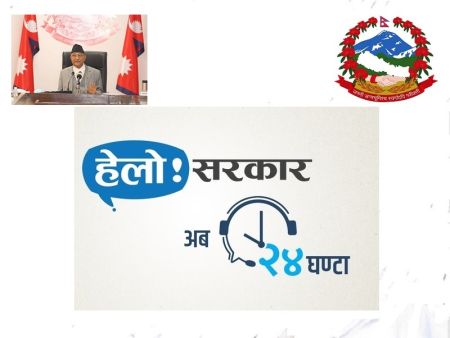Notice (8): Trying to access array offset on value of type null [APP/View/MagazineArticles/view.ctp, line 54]Code Context $user = $this->Session->read('Auth.User');
//find the group of logged user
$groupId = $user['Group']['id'];
$viewFile = '/var/www/html/newbusinessage.com/app/View/MagazineArticles/view.ctp'
$dataForView = array(
'magazineArticle' => array(
'MagazineArticle' => array(
'id' => '2909',
'magazine_issue_id' => '1002',
'magazine_category_id' => '108',
'title' => 'Reclaiming Communities',
'image' => null,
'short_content' => 'Raghuram Rajan is a well-known figure across the global academia and policy-making circles. He has had an illustrious career as a professor at Chicago University, Chief Economist at the International Monetary Fund and the Governor of the Reserve Bank of India',
'content' => '<p><strong>--BY NAVIN SUBEDI</strong></p>
<p>Raghuram Rajan is a well-known figure across the global academia and policy-making circles. He has had an illustrious career as a professor at Chicago University, Chief Economist at the International Monetary Fund and the Governor of the Reserve Bank of India. As a result, Rajan has deep insights into how the modern state and markets work and exploit each other's weaknesses.</p>
<p>“The Third Pillar: How the Markets and the State Leave the Community Behind” is Rajan’s seminal book that analyses the genies of the modern state and markets from a political-economic perspective. The author has identified the community as the third pillar in the book.</p>
<p>The community has historically been the foundation on which the modern state and markets derive their lineage. However, the fixation of the economic planners and policymakers on markets and the active state to regulate the market has, at times, put the people's welfare at risk. Highlighting the pitfalls of the state and the markets does not make Rajan anti-market. His focus is on understanding the lessons from history to give a sense of why each pillar matters and how they fit together to produce the liberal market economic order.</p>
<p>Rajan goes on to state that markets have not only separated themselves from the community in recent times but have also steadily encroached on activities that strengthened bonds with the traditional community. Indeed, the service delivery role of the modern state and the proliferation of markets have taken away many of the community engagements which has been part of human civilization for a long. A central thesis of the book is protecting communities' interests through the institutions of the market and the state. Community is described as 'a group of any size whose members reside in a specific locality, share government, and often have a common cultural heritage.'</p>
<p>The ease in which the author narrates the development of the modern state and the markets as separate entities in the medieval period from organised religion is fascinating. The author describes how the debt contract between the lender and the borrower has changed over time. The rise of monetary transactions starting from the first millennium, the role of organised religion especially the church in enforcing the contract and proscribing usury, the conflict between the church and the aristocracy are the tipping points for the evaluation of the strong state.</p>
<p>The author argues that the renaissance and reformation periods of the 15th and 16th centuries provided a strong impetus for the decline of feudalism and the limited state. The will of the people expressed through the adult franchise was prominent in limiting the ever-expanding power of the state legally. The call to free the hands of the market gave rise to rampant mercantilism and monopolies. The absence of restrictive state and lack of feudal protection to expand business operations was responsible for the explosion of market-based activities. The state took the second position, and the market was in the driving seat. The East India Company is the classic example of this unbridled mercantilism. Similarly, 19th century America is a perfect example of how big and powerful businesses tried to create monopolies and how the state addressed this tendency through anti-monopoly legislation. </p>
<p>The Great Depression of the 1930s and the Global Financial Crisis of 2008 are regarded as essential milestones in the western economic world order. Though the global economy has overcome the effects of the Financial Crisis of 2008, the lessons of these crises to invest in human capability have not been heeded to by governments. As a result, income inequality has risen faster, impacting the underprivileged community.</p>
<p>Citing the works of Bruce Katz and Jeremy Nowak, Rajan argues for inclusive localism with the active participation of the local community in their affairs as a way forward to ensure better engagement of the local communities. His focus on the 'bottom-up' approach for citizen participation is not a new idea since the donor communities at least, in theory, have been arguing for Nepal and developing countries to adopt it for rapid economic growth. However, the problem is how to 'bring people in' in the decision-making processes. Also, to ensure that local vested interests and commercial interest groups do not take control of the decision-making process over those vulnerable. This is what is missing in the book.</p>
<p><strong><em>Subedi is a political economist.</em></strong></p>
',
'status' => false,
'publish_date' => null,
'created' => '2021-01-16 20:30:21',
'modified' => '2021-01-16 20:30:21',
'keywords' => '',
'description' => '',
'sortorder' => '2859',
'feature_article' => false,
'user_id' => '11',
'image1' => null,
'image2' => null,
'image3' => null,
'image4' => null
),
'MagazineIssue' => array(
'id' => '1002',
'image' => '20210115082806_Clipboard25.jpg',
'sortorder' => '1550',
'published' => true,
'created' => '2020-02-24 17:35:19',
'modified' => '2021-01-15 20:30:06',
'title' => 'September 2019',
'publish_date' => '2019-09-01',
'parent_id' => '0',
'homepage' => true,
'user_id' => '11'
),
'MagazineCategory' => array(
'id' => '108',
'title' => 'Living +',
'sortorder' => '507',
'status' => true,
'created' => '0000-00-00 00:00:00',
'homepage' => true,
'modified' => '0000-00-00 00:00:00'
),
'User' => array(
'password' => '*****',
'id' => '11',
'user_detail_id' => '0',
'group_id' => '24',
'username' => 'nsingha@abhiyan.com.np',
'name' => '',
'email' => 'nsingha@abhiyan.com.np',
'address' => '',
'gender' => '',
'access' => '1',
'phone' => '',
'access_type' => '0',
'activated' => false,
'sortorder' => '0',
'published' => '0',
'created' => '2015-04-08 13:22:59',
'last_login' => '2023-04-16 09:29:47',
'ip' => '172.69.77.43'
),
'MagazineArticleComment' => array(),
'MagazineView' => array(
(int) 0 => array(
[maximum depth reached]
)
)
),
'current_user' => null,
'logged_in' => false
)
$magazineArticle = array(
'MagazineArticle' => array(
'id' => '2909',
'magazine_issue_id' => '1002',
'magazine_category_id' => '108',
'title' => 'Reclaiming Communities',
'image' => null,
'short_content' => 'Raghuram Rajan is a well-known figure across the global academia and policy-making circles. He has had an illustrious career as a professor at Chicago University, Chief Economist at the International Monetary Fund and the Governor of the Reserve Bank of India',
'content' => '<p><strong>--BY NAVIN SUBEDI</strong></p>
<p>Raghuram Rajan is a well-known figure across the global academia and policy-making circles. He has had an illustrious career as a professor at Chicago University, Chief Economist at the International Monetary Fund and the Governor of the Reserve Bank of India. As a result, Rajan has deep insights into how the modern state and markets work and exploit each other's weaknesses.</p>
<p>“The Third Pillar: How the Markets and the State Leave the Community Behind” is Rajan’s seminal book that analyses the genies of the modern state and markets from a political-economic perspective. The author has identified the community as the third pillar in the book.</p>
<p>The community has historically been the foundation on which the modern state and markets derive their lineage. However, the fixation of the economic planners and policymakers on markets and the active state to regulate the market has, at times, put the people's welfare at risk. Highlighting the pitfalls of the state and the markets does not make Rajan anti-market. His focus is on understanding the lessons from history to give a sense of why each pillar matters and how they fit together to produce the liberal market economic order.</p>
<p>Rajan goes on to state that markets have not only separated themselves from the community in recent times but have also steadily encroached on activities that strengthened bonds with the traditional community. Indeed, the service delivery role of the modern state and the proliferation of markets have taken away many of the community engagements which has been part of human civilization for a long. A central thesis of the book is protecting communities' interests through the institutions of the market and the state. Community is described as 'a group of any size whose members reside in a specific locality, share government, and often have a common cultural heritage.'</p>
<p>The ease in which the author narrates the development of the modern state and the markets as separate entities in the medieval period from organised religion is fascinating. The author describes how the debt contract between the lender and the borrower has changed over time. The rise of monetary transactions starting from the first millennium, the role of organised religion especially the church in enforcing the contract and proscribing usury, the conflict between the church and the aristocracy are the tipping points for the evaluation of the strong state.</p>
<p>The author argues that the renaissance and reformation periods of the 15th and 16th centuries provided a strong impetus for the decline of feudalism and the limited state. The will of the people expressed through the adult franchise was prominent in limiting the ever-expanding power of the state legally. The call to free the hands of the market gave rise to rampant mercantilism and monopolies. The absence of restrictive state and lack of feudal protection to expand business operations was responsible for the explosion of market-based activities. The state took the second position, and the market was in the driving seat. The East India Company is the classic example of this unbridled mercantilism. Similarly, 19th century America is a perfect example of how big and powerful businesses tried to create monopolies and how the state addressed this tendency through anti-monopoly legislation. </p>
<p>The Great Depression of the 1930s and the Global Financial Crisis of 2008 are regarded as essential milestones in the western economic world order. Though the global economy has overcome the effects of the Financial Crisis of 2008, the lessons of these crises to invest in human capability have not been heeded to by governments. As a result, income inequality has risen faster, impacting the underprivileged community.</p>
<p>Citing the works of Bruce Katz and Jeremy Nowak, Rajan argues for inclusive localism with the active participation of the local community in their affairs as a way forward to ensure better engagement of the local communities. His focus on the 'bottom-up' approach for citizen participation is not a new idea since the donor communities at least, in theory, have been arguing for Nepal and developing countries to adopt it for rapid economic growth. However, the problem is how to 'bring people in' in the decision-making processes. Also, to ensure that local vested interests and commercial interest groups do not take control of the decision-making process over those vulnerable. This is what is missing in the book.</p>
<p><strong><em>Subedi is a political economist.</em></strong></p>
',
'status' => false,
'publish_date' => null,
'created' => '2021-01-16 20:30:21',
'modified' => '2021-01-16 20:30:21',
'keywords' => '',
'description' => '',
'sortorder' => '2859',
'feature_article' => false,
'user_id' => '11',
'image1' => null,
'image2' => null,
'image3' => null,
'image4' => null
),
'MagazineIssue' => array(
'id' => '1002',
'image' => '20210115082806_Clipboard25.jpg',
'sortorder' => '1550',
'published' => true,
'created' => '2020-02-24 17:35:19',
'modified' => '2021-01-15 20:30:06',
'title' => 'September 2019',
'publish_date' => '2019-09-01',
'parent_id' => '0',
'homepage' => true,
'user_id' => '11'
),
'MagazineCategory' => array(
'id' => '108',
'title' => 'Living +',
'sortorder' => '507',
'status' => true,
'created' => '0000-00-00 00:00:00',
'homepage' => true,
'modified' => '0000-00-00 00:00:00'
),
'User' => array(
'password' => '*****',
'id' => '11',
'user_detail_id' => '0',
'group_id' => '24',
'username' => 'nsingha@abhiyan.com.np',
'name' => '',
'email' => 'nsingha@abhiyan.com.np',
'address' => '',
'gender' => '',
'access' => '1',
'phone' => '',
'access_type' => '0',
'activated' => false,
'sortorder' => '0',
'published' => '0',
'created' => '2015-04-08 13:22:59',
'last_login' => '2023-04-16 09:29:47',
'ip' => '172.69.77.43'
),
'MagazineArticleComment' => array(),
'MagazineView' => array(
(int) 0 => array(
'magazine_article_id' => '2909',
'hit' => '748'
)
)
)
$current_user = null
$logged_in = false
$user = null
include - APP/View/MagazineArticles/view.ctp, line 54
View::_evaluate() - CORE/Cake/View/View.php, line 971
View::_render() - CORE/Cake/View/View.php, line 933
View::render() - CORE/Cake/View/View.php, line 473
Controller::render() - CORE/Cake/Controller/Controller.php, line 968
Dispatcher::_invoke() - CORE/Cake/Routing/Dispatcher.php, line 200
Dispatcher::dispatch() - CORE/Cake/Routing/Dispatcher.php, line 167
[main] - APP/webroot/index.php, line 117
Notice (8): Trying to access array offset on value of type null [APP/View/MagazineArticles/view.ctp, line 54]Code Context $user = $this->Session->read('Auth.User');
//find the group of logged user
$groupId = $user['Group']['id'];
$viewFile = '/var/www/html/newbusinessage.com/app/View/MagazineArticles/view.ctp'
$dataForView = array(
'magazineArticle' => array(
'MagazineArticle' => array(
'id' => '2909',
'magazine_issue_id' => '1002',
'magazine_category_id' => '108',
'title' => 'Reclaiming Communities',
'image' => null,
'short_content' => 'Raghuram Rajan is a well-known figure across the global academia and policy-making circles. He has had an illustrious career as a professor at Chicago University, Chief Economist at the International Monetary Fund and the Governor of the Reserve Bank of India',
'content' => '<p><strong>--BY NAVIN SUBEDI</strong></p>
<p>Raghuram Rajan is a well-known figure across the global academia and policy-making circles. He has had an illustrious career as a professor at Chicago University, Chief Economist at the International Monetary Fund and the Governor of the Reserve Bank of India. As a result, Rajan has deep insights into how the modern state and markets work and exploit each other's weaknesses.</p>
<p>“The Third Pillar: How the Markets and the State Leave the Community Behind” is Rajan’s seminal book that analyses the genies of the modern state and markets from a political-economic perspective. The author has identified the community as the third pillar in the book.</p>
<p>The community has historically been the foundation on which the modern state and markets derive their lineage. However, the fixation of the economic planners and policymakers on markets and the active state to regulate the market has, at times, put the people's welfare at risk. Highlighting the pitfalls of the state and the markets does not make Rajan anti-market. His focus is on understanding the lessons from history to give a sense of why each pillar matters and how they fit together to produce the liberal market economic order.</p>
<p>Rajan goes on to state that markets have not only separated themselves from the community in recent times but have also steadily encroached on activities that strengthened bonds with the traditional community. Indeed, the service delivery role of the modern state and the proliferation of markets have taken away many of the community engagements which has been part of human civilization for a long. A central thesis of the book is protecting communities' interests through the institutions of the market and the state. Community is described as 'a group of any size whose members reside in a specific locality, share government, and often have a common cultural heritage.'</p>
<p>The ease in which the author narrates the development of the modern state and the markets as separate entities in the medieval period from organised religion is fascinating. The author describes how the debt contract between the lender and the borrower has changed over time. The rise of monetary transactions starting from the first millennium, the role of organised religion especially the church in enforcing the contract and proscribing usury, the conflict between the church and the aristocracy are the tipping points for the evaluation of the strong state.</p>
<p>The author argues that the renaissance and reformation periods of the 15th and 16th centuries provided a strong impetus for the decline of feudalism and the limited state. The will of the people expressed through the adult franchise was prominent in limiting the ever-expanding power of the state legally. The call to free the hands of the market gave rise to rampant mercantilism and monopolies. The absence of restrictive state and lack of feudal protection to expand business operations was responsible for the explosion of market-based activities. The state took the second position, and the market was in the driving seat. The East India Company is the classic example of this unbridled mercantilism. Similarly, 19th century America is a perfect example of how big and powerful businesses tried to create monopolies and how the state addressed this tendency through anti-monopoly legislation. </p>
<p>The Great Depression of the 1930s and the Global Financial Crisis of 2008 are regarded as essential milestones in the western economic world order. Though the global economy has overcome the effects of the Financial Crisis of 2008, the lessons of these crises to invest in human capability have not been heeded to by governments. As a result, income inequality has risen faster, impacting the underprivileged community.</p>
<p>Citing the works of Bruce Katz and Jeremy Nowak, Rajan argues for inclusive localism with the active participation of the local community in their affairs as a way forward to ensure better engagement of the local communities. His focus on the 'bottom-up' approach for citizen participation is not a new idea since the donor communities at least, in theory, have been arguing for Nepal and developing countries to adopt it for rapid economic growth. However, the problem is how to 'bring people in' in the decision-making processes. Also, to ensure that local vested interests and commercial interest groups do not take control of the decision-making process over those vulnerable. This is what is missing in the book.</p>
<p><strong><em>Subedi is a political economist.</em></strong></p>
',
'status' => false,
'publish_date' => null,
'created' => '2021-01-16 20:30:21',
'modified' => '2021-01-16 20:30:21',
'keywords' => '',
'description' => '',
'sortorder' => '2859',
'feature_article' => false,
'user_id' => '11',
'image1' => null,
'image2' => null,
'image3' => null,
'image4' => null
),
'MagazineIssue' => array(
'id' => '1002',
'image' => '20210115082806_Clipboard25.jpg',
'sortorder' => '1550',
'published' => true,
'created' => '2020-02-24 17:35:19',
'modified' => '2021-01-15 20:30:06',
'title' => 'September 2019',
'publish_date' => '2019-09-01',
'parent_id' => '0',
'homepage' => true,
'user_id' => '11'
),
'MagazineCategory' => array(
'id' => '108',
'title' => 'Living +',
'sortorder' => '507',
'status' => true,
'created' => '0000-00-00 00:00:00',
'homepage' => true,
'modified' => '0000-00-00 00:00:00'
),
'User' => array(
'password' => '*****',
'id' => '11',
'user_detail_id' => '0',
'group_id' => '24',
'username' => 'nsingha@abhiyan.com.np',
'name' => '',
'email' => 'nsingha@abhiyan.com.np',
'address' => '',
'gender' => '',
'access' => '1',
'phone' => '',
'access_type' => '0',
'activated' => false,
'sortorder' => '0',
'published' => '0',
'created' => '2015-04-08 13:22:59',
'last_login' => '2023-04-16 09:29:47',
'ip' => '172.69.77.43'
),
'MagazineArticleComment' => array(),
'MagazineView' => array(
(int) 0 => array(
[maximum depth reached]
)
)
),
'current_user' => null,
'logged_in' => false
)
$magazineArticle = array(
'MagazineArticle' => array(
'id' => '2909',
'magazine_issue_id' => '1002',
'magazine_category_id' => '108',
'title' => 'Reclaiming Communities',
'image' => null,
'short_content' => 'Raghuram Rajan is a well-known figure across the global academia and policy-making circles. He has had an illustrious career as a professor at Chicago University, Chief Economist at the International Monetary Fund and the Governor of the Reserve Bank of India',
'content' => '<p><strong>--BY NAVIN SUBEDI</strong></p>
<p>Raghuram Rajan is a well-known figure across the global academia and policy-making circles. He has had an illustrious career as a professor at Chicago University, Chief Economist at the International Monetary Fund and the Governor of the Reserve Bank of India. As a result, Rajan has deep insights into how the modern state and markets work and exploit each other's weaknesses.</p>
<p>“The Third Pillar: How the Markets and the State Leave the Community Behind” is Rajan’s seminal book that analyses the genies of the modern state and markets from a political-economic perspective. The author has identified the community as the third pillar in the book.</p>
<p>The community has historically been the foundation on which the modern state and markets derive their lineage. However, the fixation of the economic planners and policymakers on markets and the active state to regulate the market has, at times, put the people's welfare at risk. Highlighting the pitfalls of the state and the markets does not make Rajan anti-market. His focus is on understanding the lessons from history to give a sense of why each pillar matters and how they fit together to produce the liberal market economic order.</p>
<p>Rajan goes on to state that markets have not only separated themselves from the community in recent times but have also steadily encroached on activities that strengthened bonds with the traditional community. Indeed, the service delivery role of the modern state and the proliferation of markets have taken away many of the community engagements which has been part of human civilization for a long. A central thesis of the book is protecting communities' interests through the institutions of the market and the state. Community is described as 'a group of any size whose members reside in a specific locality, share government, and often have a common cultural heritage.'</p>
<p>The ease in which the author narrates the development of the modern state and the markets as separate entities in the medieval period from organised religion is fascinating. The author describes how the debt contract between the lender and the borrower has changed over time. The rise of monetary transactions starting from the first millennium, the role of organised religion especially the church in enforcing the contract and proscribing usury, the conflict between the church and the aristocracy are the tipping points for the evaluation of the strong state.</p>
<p>The author argues that the renaissance and reformation periods of the 15th and 16th centuries provided a strong impetus for the decline of feudalism and the limited state. The will of the people expressed through the adult franchise was prominent in limiting the ever-expanding power of the state legally. The call to free the hands of the market gave rise to rampant mercantilism and monopolies. The absence of restrictive state and lack of feudal protection to expand business operations was responsible for the explosion of market-based activities. The state took the second position, and the market was in the driving seat. The East India Company is the classic example of this unbridled mercantilism. Similarly, 19th century America is a perfect example of how big and powerful businesses tried to create monopolies and how the state addressed this tendency through anti-monopoly legislation. </p>
<p>The Great Depression of the 1930s and the Global Financial Crisis of 2008 are regarded as essential milestones in the western economic world order. Though the global economy has overcome the effects of the Financial Crisis of 2008, the lessons of these crises to invest in human capability have not been heeded to by governments. As a result, income inequality has risen faster, impacting the underprivileged community.</p>
<p>Citing the works of Bruce Katz and Jeremy Nowak, Rajan argues for inclusive localism with the active participation of the local community in their affairs as a way forward to ensure better engagement of the local communities. His focus on the 'bottom-up' approach for citizen participation is not a new idea since the donor communities at least, in theory, have been arguing for Nepal and developing countries to adopt it for rapid economic growth. However, the problem is how to 'bring people in' in the decision-making processes. Also, to ensure that local vested interests and commercial interest groups do not take control of the decision-making process over those vulnerable. This is what is missing in the book.</p>
<p><strong><em>Subedi is a political economist.</em></strong></p>
',
'status' => false,
'publish_date' => null,
'created' => '2021-01-16 20:30:21',
'modified' => '2021-01-16 20:30:21',
'keywords' => '',
'description' => '',
'sortorder' => '2859',
'feature_article' => false,
'user_id' => '11',
'image1' => null,
'image2' => null,
'image3' => null,
'image4' => null
),
'MagazineIssue' => array(
'id' => '1002',
'image' => '20210115082806_Clipboard25.jpg',
'sortorder' => '1550',
'published' => true,
'created' => '2020-02-24 17:35:19',
'modified' => '2021-01-15 20:30:06',
'title' => 'September 2019',
'publish_date' => '2019-09-01',
'parent_id' => '0',
'homepage' => true,
'user_id' => '11'
),
'MagazineCategory' => array(
'id' => '108',
'title' => 'Living +',
'sortorder' => '507',
'status' => true,
'created' => '0000-00-00 00:00:00',
'homepage' => true,
'modified' => '0000-00-00 00:00:00'
),
'User' => array(
'password' => '*****',
'id' => '11',
'user_detail_id' => '0',
'group_id' => '24',
'username' => 'nsingha@abhiyan.com.np',
'name' => '',
'email' => 'nsingha@abhiyan.com.np',
'address' => '',
'gender' => '',
'access' => '1',
'phone' => '',
'access_type' => '0',
'activated' => false,
'sortorder' => '0',
'published' => '0',
'created' => '2015-04-08 13:22:59',
'last_login' => '2023-04-16 09:29:47',
'ip' => '172.69.77.43'
),
'MagazineArticleComment' => array(),
'MagazineView' => array(
(int) 0 => array(
'magazine_article_id' => '2909',
'hit' => '748'
)
)
)
$current_user = null
$logged_in = false
$user = null
include - APP/View/MagazineArticles/view.ctp, line 54
View::_evaluate() - CORE/Cake/View/View.php, line 971
View::_render() - CORE/Cake/View/View.php, line 933
View::render() - CORE/Cake/View/View.php, line 473
Controller::render() - CORE/Cake/Controller/Controller.php, line 968
Dispatcher::_invoke() - CORE/Cake/Routing/Dispatcher.php, line 200
Dispatcher::dispatch() - CORE/Cake/Routing/Dispatcher.php, line 167
[main] - APP/webroot/index.php, line 117
Notice (8): Trying to access array offset on value of type null [APP/View/MagazineArticles/view.ctp, line 55]Code Context //find the group of logged user
$groupId = $user['Group']['id'];
$user_id=$user["id"];
$viewFile = '/var/www/html/newbusinessage.com/app/View/MagazineArticles/view.ctp'
$dataForView = array(
'magazineArticle' => array(
'MagazineArticle' => array(
'id' => '2909',
'magazine_issue_id' => '1002',
'magazine_category_id' => '108',
'title' => 'Reclaiming Communities',
'image' => null,
'short_content' => 'Raghuram Rajan is a well-known figure across the global academia and policy-making circles. He has had an illustrious career as a professor at Chicago University, Chief Economist at the International Monetary Fund and the Governor of the Reserve Bank of India',
'content' => '<p><strong>--BY NAVIN SUBEDI</strong></p>
<p>Raghuram Rajan is a well-known figure across the global academia and policy-making circles. He has had an illustrious career as a professor at Chicago University, Chief Economist at the International Monetary Fund and the Governor of the Reserve Bank of India. As a result, Rajan has deep insights into how the modern state and markets work and exploit each other's weaknesses.</p>
<p>“The Third Pillar: How the Markets and the State Leave the Community Behind” is Rajan’s seminal book that analyses the genies of the modern state and markets from a political-economic perspective. The author has identified the community as the third pillar in the book.</p>
<p>The community has historically been the foundation on which the modern state and markets derive their lineage. However, the fixation of the economic planners and policymakers on markets and the active state to regulate the market has, at times, put the people's welfare at risk. Highlighting the pitfalls of the state and the markets does not make Rajan anti-market. His focus is on understanding the lessons from history to give a sense of why each pillar matters and how they fit together to produce the liberal market economic order.</p>
<p>Rajan goes on to state that markets have not only separated themselves from the community in recent times but have also steadily encroached on activities that strengthened bonds with the traditional community. Indeed, the service delivery role of the modern state and the proliferation of markets have taken away many of the community engagements which has been part of human civilization for a long. A central thesis of the book is protecting communities' interests through the institutions of the market and the state. Community is described as 'a group of any size whose members reside in a specific locality, share government, and often have a common cultural heritage.'</p>
<p>The ease in which the author narrates the development of the modern state and the markets as separate entities in the medieval period from organised religion is fascinating. The author describes how the debt contract between the lender and the borrower has changed over time. The rise of monetary transactions starting from the first millennium, the role of organised religion especially the church in enforcing the contract and proscribing usury, the conflict between the church and the aristocracy are the tipping points for the evaluation of the strong state.</p>
<p>The author argues that the renaissance and reformation periods of the 15th and 16th centuries provided a strong impetus for the decline of feudalism and the limited state. The will of the people expressed through the adult franchise was prominent in limiting the ever-expanding power of the state legally. The call to free the hands of the market gave rise to rampant mercantilism and monopolies. The absence of restrictive state and lack of feudal protection to expand business operations was responsible for the explosion of market-based activities. The state took the second position, and the market was in the driving seat. The East India Company is the classic example of this unbridled mercantilism. Similarly, 19th century America is a perfect example of how big and powerful businesses tried to create monopolies and how the state addressed this tendency through anti-monopoly legislation. </p>
<p>The Great Depression of the 1930s and the Global Financial Crisis of 2008 are regarded as essential milestones in the western economic world order. Though the global economy has overcome the effects of the Financial Crisis of 2008, the lessons of these crises to invest in human capability have not been heeded to by governments. As a result, income inequality has risen faster, impacting the underprivileged community.</p>
<p>Citing the works of Bruce Katz and Jeremy Nowak, Rajan argues for inclusive localism with the active participation of the local community in their affairs as a way forward to ensure better engagement of the local communities. His focus on the 'bottom-up' approach for citizen participation is not a new idea since the donor communities at least, in theory, have been arguing for Nepal and developing countries to adopt it for rapid economic growth. However, the problem is how to 'bring people in' in the decision-making processes. Also, to ensure that local vested interests and commercial interest groups do not take control of the decision-making process over those vulnerable. This is what is missing in the book.</p>
<p><strong><em>Subedi is a political economist.</em></strong></p>
',
'status' => false,
'publish_date' => null,
'created' => '2021-01-16 20:30:21',
'modified' => '2021-01-16 20:30:21',
'keywords' => '',
'description' => '',
'sortorder' => '2859',
'feature_article' => false,
'user_id' => '11',
'image1' => null,
'image2' => null,
'image3' => null,
'image4' => null
),
'MagazineIssue' => array(
'id' => '1002',
'image' => '20210115082806_Clipboard25.jpg',
'sortorder' => '1550',
'published' => true,
'created' => '2020-02-24 17:35:19',
'modified' => '2021-01-15 20:30:06',
'title' => 'September 2019',
'publish_date' => '2019-09-01',
'parent_id' => '0',
'homepage' => true,
'user_id' => '11'
),
'MagazineCategory' => array(
'id' => '108',
'title' => 'Living +',
'sortorder' => '507',
'status' => true,
'created' => '0000-00-00 00:00:00',
'homepage' => true,
'modified' => '0000-00-00 00:00:00'
),
'User' => array(
'password' => '*****',
'id' => '11',
'user_detail_id' => '0',
'group_id' => '24',
'username' => 'nsingha@abhiyan.com.np',
'name' => '',
'email' => 'nsingha@abhiyan.com.np',
'address' => '',
'gender' => '',
'access' => '1',
'phone' => '',
'access_type' => '0',
'activated' => false,
'sortorder' => '0',
'published' => '0',
'created' => '2015-04-08 13:22:59',
'last_login' => '2023-04-16 09:29:47',
'ip' => '172.69.77.43'
),
'MagazineArticleComment' => array(),
'MagazineView' => array(
(int) 0 => array(
[maximum depth reached]
)
)
),
'current_user' => null,
'logged_in' => false
)
$magazineArticle = array(
'MagazineArticle' => array(
'id' => '2909',
'magazine_issue_id' => '1002',
'magazine_category_id' => '108',
'title' => 'Reclaiming Communities',
'image' => null,
'short_content' => 'Raghuram Rajan is a well-known figure across the global academia and policy-making circles. He has had an illustrious career as a professor at Chicago University, Chief Economist at the International Monetary Fund and the Governor of the Reserve Bank of India',
'content' => '<p><strong>--BY NAVIN SUBEDI</strong></p>
<p>Raghuram Rajan is a well-known figure across the global academia and policy-making circles. He has had an illustrious career as a professor at Chicago University, Chief Economist at the International Monetary Fund and the Governor of the Reserve Bank of India. As a result, Rajan has deep insights into how the modern state and markets work and exploit each other's weaknesses.</p>
<p>“The Third Pillar: How the Markets and the State Leave the Community Behind” is Rajan’s seminal book that analyses the genies of the modern state and markets from a political-economic perspective. The author has identified the community as the third pillar in the book.</p>
<p>The community has historically been the foundation on which the modern state and markets derive their lineage. However, the fixation of the economic planners and policymakers on markets and the active state to regulate the market has, at times, put the people's welfare at risk. Highlighting the pitfalls of the state and the markets does not make Rajan anti-market. His focus is on understanding the lessons from history to give a sense of why each pillar matters and how they fit together to produce the liberal market economic order.</p>
<p>Rajan goes on to state that markets have not only separated themselves from the community in recent times but have also steadily encroached on activities that strengthened bonds with the traditional community. Indeed, the service delivery role of the modern state and the proliferation of markets have taken away many of the community engagements which has been part of human civilization for a long. A central thesis of the book is protecting communities' interests through the institutions of the market and the state. Community is described as 'a group of any size whose members reside in a specific locality, share government, and often have a common cultural heritage.'</p>
<p>The ease in which the author narrates the development of the modern state and the markets as separate entities in the medieval period from organised religion is fascinating. The author describes how the debt contract between the lender and the borrower has changed over time. The rise of monetary transactions starting from the first millennium, the role of organised religion especially the church in enforcing the contract and proscribing usury, the conflict between the church and the aristocracy are the tipping points for the evaluation of the strong state.</p>
<p>The author argues that the renaissance and reformation periods of the 15th and 16th centuries provided a strong impetus for the decline of feudalism and the limited state. The will of the people expressed through the adult franchise was prominent in limiting the ever-expanding power of the state legally. The call to free the hands of the market gave rise to rampant mercantilism and monopolies. The absence of restrictive state and lack of feudal protection to expand business operations was responsible for the explosion of market-based activities. The state took the second position, and the market was in the driving seat. The East India Company is the classic example of this unbridled mercantilism. Similarly, 19th century America is a perfect example of how big and powerful businesses tried to create monopolies and how the state addressed this tendency through anti-monopoly legislation. </p>
<p>The Great Depression of the 1930s and the Global Financial Crisis of 2008 are regarded as essential milestones in the western economic world order. Though the global economy has overcome the effects of the Financial Crisis of 2008, the lessons of these crises to invest in human capability have not been heeded to by governments. As a result, income inequality has risen faster, impacting the underprivileged community.</p>
<p>Citing the works of Bruce Katz and Jeremy Nowak, Rajan argues for inclusive localism with the active participation of the local community in their affairs as a way forward to ensure better engagement of the local communities. His focus on the 'bottom-up' approach for citizen participation is not a new idea since the donor communities at least, in theory, have been arguing for Nepal and developing countries to adopt it for rapid economic growth. However, the problem is how to 'bring people in' in the decision-making processes. Also, to ensure that local vested interests and commercial interest groups do not take control of the decision-making process over those vulnerable. This is what is missing in the book.</p>
<p><strong><em>Subedi is a political economist.</em></strong></p>
',
'status' => false,
'publish_date' => null,
'created' => '2021-01-16 20:30:21',
'modified' => '2021-01-16 20:30:21',
'keywords' => '',
'description' => '',
'sortorder' => '2859',
'feature_article' => false,
'user_id' => '11',
'image1' => null,
'image2' => null,
'image3' => null,
'image4' => null
),
'MagazineIssue' => array(
'id' => '1002',
'image' => '20210115082806_Clipboard25.jpg',
'sortorder' => '1550',
'published' => true,
'created' => '2020-02-24 17:35:19',
'modified' => '2021-01-15 20:30:06',
'title' => 'September 2019',
'publish_date' => '2019-09-01',
'parent_id' => '0',
'homepage' => true,
'user_id' => '11'
),
'MagazineCategory' => array(
'id' => '108',
'title' => 'Living +',
'sortorder' => '507',
'status' => true,
'created' => '0000-00-00 00:00:00',
'homepage' => true,
'modified' => '0000-00-00 00:00:00'
),
'User' => array(
'password' => '*****',
'id' => '11',
'user_detail_id' => '0',
'group_id' => '24',
'username' => 'nsingha@abhiyan.com.np',
'name' => '',
'email' => 'nsingha@abhiyan.com.np',
'address' => '',
'gender' => '',
'access' => '1',
'phone' => '',
'access_type' => '0',
'activated' => false,
'sortorder' => '0',
'published' => '0',
'created' => '2015-04-08 13:22:59',
'last_login' => '2023-04-16 09:29:47',
'ip' => '172.69.77.43'
),
'MagazineArticleComment' => array(),
'MagazineView' => array(
(int) 0 => array(
'magazine_article_id' => '2909',
'hit' => '748'
)
)
)
$current_user = null
$logged_in = false
$user = null
$groupId = null
include - APP/View/MagazineArticles/view.ctp, line 55
View::_evaluate() - CORE/Cake/View/View.php, line 971
View::_render() - CORE/Cake/View/View.php, line 933
View::render() - CORE/Cake/View/View.php, line 473
Controller::render() - CORE/Cake/Controller/Controller.php, line 968
Dispatcher::_invoke() - CORE/Cake/Routing/Dispatcher.php, line 200
Dispatcher::dispatch() - CORE/Cake/Routing/Dispatcher.php, line 167
[main] - APP/webroot/index.php, line 117
Notice (8): Undefined index: summary [APP/View/MagazineArticles/view.ctp, line 62]Code Context<?php
echo $this->Html->meta(array('name' => 'description', 'type' => 'meta', 'content' => $magazineArticle['MagazineArticle']['summary']), null, array('inline' => false));?>
$viewFile = '/var/www/html/newbusinessage.com/app/View/MagazineArticles/view.ctp'
$dataForView = array(
'magazineArticle' => array(
'MagazineArticle' => array(
'id' => '2909',
'magazine_issue_id' => '1002',
'magazine_category_id' => '108',
'title' => 'Reclaiming Communities',
'image' => null,
'short_content' => 'Raghuram Rajan is a well-known figure across the global academia and policy-making circles. He has had an illustrious career as a professor at Chicago University, Chief Economist at the International Monetary Fund and the Governor of the Reserve Bank of India',
'content' => '<p><strong>--BY NAVIN SUBEDI</strong></p>
<p>Raghuram Rajan is a well-known figure across the global academia and policy-making circles. He has had an illustrious career as a professor at Chicago University, Chief Economist at the International Monetary Fund and the Governor of the Reserve Bank of India. As a result, Rajan has deep insights into how the modern state and markets work and exploit each other's weaknesses.</p>
<p>“The Third Pillar: How the Markets and the State Leave the Community Behind” is Rajan’s seminal book that analyses the genies of the modern state and markets from a political-economic perspective. The author has identified the community as the third pillar in the book.</p>
<p>The community has historically been the foundation on which the modern state and markets derive their lineage. However, the fixation of the economic planners and policymakers on markets and the active state to regulate the market has, at times, put the people's welfare at risk. Highlighting the pitfalls of the state and the markets does not make Rajan anti-market. His focus is on understanding the lessons from history to give a sense of why each pillar matters and how they fit together to produce the liberal market economic order.</p>
<p>Rajan goes on to state that markets have not only separated themselves from the community in recent times but have also steadily encroached on activities that strengthened bonds with the traditional community. Indeed, the service delivery role of the modern state and the proliferation of markets have taken away many of the community engagements which has been part of human civilization for a long. A central thesis of the book is protecting communities' interests through the institutions of the market and the state. Community is described as 'a group of any size whose members reside in a specific locality, share government, and often have a common cultural heritage.'</p>
<p>The ease in which the author narrates the development of the modern state and the markets as separate entities in the medieval period from organised religion is fascinating. The author describes how the debt contract between the lender and the borrower has changed over time. The rise of monetary transactions starting from the first millennium, the role of organised religion especially the church in enforcing the contract and proscribing usury, the conflict between the church and the aristocracy are the tipping points for the evaluation of the strong state.</p>
<p>The author argues that the renaissance and reformation periods of the 15th and 16th centuries provided a strong impetus for the decline of feudalism and the limited state. The will of the people expressed through the adult franchise was prominent in limiting the ever-expanding power of the state legally. The call to free the hands of the market gave rise to rampant mercantilism and monopolies. The absence of restrictive state and lack of feudal protection to expand business operations was responsible for the explosion of market-based activities. The state took the second position, and the market was in the driving seat. The East India Company is the classic example of this unbridled mercantilism. Similarly, 19th century America is a perfect example of how big and powerful businesses tried to create monopolies and how the state addressed this tendency through anti-monopoly legislation. </p>
<p>The Great Depression of the 1930s and the Global Financial Crisis of 2008 are regarded as essential milestones in the western economic world order. Though the global economy has overcome the effects of the Financial Crisis of 2008, the lessons of these crises to invest in human capability have not been heeded to by governments. As a result, income inequality has risen faster, impacting the underprivileged community.</p>
<p>Citing the works of Bruce Katz and Jeremy Nowak, Rajan argues for inclusive localism with the active participation of the local community in their affairs as a way forward to ensure better engagement of the local communities. His focus on the 'bottom-up' approach for citizen participation is not a new idea since the donor communities at least, in theory, have been arguing for Nepal and developing countries to adopt it for rapid economic growth. However, the problem is how to 'bring people in' in the decision-making processes. Also, to ensure that local vested interests and commercial interest groups do not take control of the decision-making process over those vulnerable. This is what is missing in the book.</p>
<p><strong><em>Subedi is a political economist.</em></strong></p>
',
'status' => false,
'publish_date' => null,
'created' => '2021-01-16 20:30:21',
'modified' => '2021-01-16 20:30:21',
'keywords' => '',
'description' => '',
'sortorder' => '2859',
'feature_article' => false,
'user_id' => '11',
'image1' => null,
'image2' => null,
'image3' => null,
'image4' => null
),
'MagazineIssue' => array(
'id' => '1002',
'image' => '20210115082806_Clipboard25.jpg',
'sortorder' => '1550',
'published' => true,
'created' => '2020-02-24 17:35:19',
'modified' => '2021-01-15 20:30:06',
'title' => 'September 2019',
'publish_date' => '2019-09-01',
'parent_id' => '0',
'homepage' => true,
'user_id' => '11'
),
'MagazineCategory' => array(
'id' => '108',
'title' => 'Living +',
'sortorder' => '507',
'status' => true,
'created' => '0000-00-00 00:00:00',
'homepage' => true,
'modified' => '0000-00-00 00:00:00'
),
'User' => array(
'password' => '*****',
'id' => '11',
'user_detail_id' => '0',
'group_id' => '24',
'username' => 'nsingha@abhiyan.com.np',
'name' => '',
'email' => 'nsingha@abhiyan.com.np',
'address' => '',
'gender' => '',
'access' => '1',
'phone' => '',
'access_type' => '0',
'activated' => false,
'sortorder' => '0',
'published' => '0',
'created' => '2015-04-08 13:22:59',
'last_login' => '2023-04-16 09:29:47',
'ip' => '172.69.77.43'
),
'MagazineArticleComment' => array(),
'MagazineView' => array(
(int) 0 => array(
[maximum depth reached]
)
)
),
'current_user' => null,
'logged_in' => false
)
$magazineArticle = array(
'MagazineArticle' => array(
'id' => '2909',
'magazine_issue_id' => '1002',
'magazine_category_id' => '108',
'title' => 'Reclaiming Communities',
'image' => null,
'short_content' => 'Raghuram Rajan is a well-known figure across the global academia and policy-making circles. He has had an illustrious career as a professor at Chicago University, Chief Economist at the International Monetary Fund and the Governor of the Reserve Bank of India',
'content' => '<p><strong>--BY NAVIN SUBEDI</strong></p>
<p>Raghuram Rajan is a well-known figure across the global academia and policy-making circles. He has had an illustrious career as a professor at Chicago University, Chief Economist at the International Monetary Fund and the Governor of the Reserve Bank of India. As a result, Rajan has deep insights into how the modern state and markets work and exploit each other's weaknesses.</p>
<p>“The Third Pillar: How the Markets and the State Leave the Community Behind” is Rajan’s seminal book that analyses the genies of the modern state and markets from a political-economic perspective. The author has identified the community as the third pillar in the book.</p>
<p>The community has historically been the foundation on which the modern state and markets derive their lineage. However, the fixation of the economic planners and policymakers on markets and the active state to regulate the market has, at times, put the people's welfare at risk. Highlighting the pitfalls of the state and the markets does not make Rajan anti-market. His focus is on understanding the lessons from history to give a sense of why each pillar matters and how they fit together to produce the liberal market economic order.</p>
<p>Rajan goes on to state that markets have not only separated themselves from the community in recent times but have also steadily encroached on activities that strengthened bonds with the traditional community. Indeed, the service delivery role of the modern state and the proliferation of markets have taken away many of the community engagements which has been part of human civilization for a long. A central thesis of the book is protecting communities' interests through the institutions of the market and the state. Community is described as 'a group of any size whose members reside in a specific locality, share government, and often have a common cultural heritage.'</p>
<p>The ease in which the author narrates the development of the modern state and the markets as separate entities in the medieval period from organised religion is fascinating. The author describes how the debt contract between the lender and the borrower has changed over time. The rise of monetary transactions starting from the first millennium, the role of organised religion especially the church in enforcing the contract and proscribing usury, the conflict between the church and the aristocracy are the tipping points for the evaluation of the strong state.</p>
<p>The author argues that the renaissance and reformation periods of the 15th and 16th centuries provided a strong impetus for the decline of feudalism and the limited state. The will of the people expressed through the adult franchise was prominent in limiting the ever-expanding power of the state legally. The call to free the hands of the market gave rise to rampant mercantilism and monopolies. The absence of restrictive state and lack of feudal protection to expand business operations was responsible for the explosion of market-based activities. The state took the second position, and the market was in the driving seat. The East India Company is the classic example of this unbridled mercantilism. Similarly, 19th century America is a perfect example of how big and powerful businesses tried to create monopolies and how the state addressed this tendency through anti-monopoly legislation. </p>
<p>The Great Depression of the 1930s and the Global Financial Crisis of 2008 are regarded as essential milestones in the western economic world order. Though the global economy has overcome the effects of the Financial Crisis of 2008, the lessons of these crises to invest in human capability have not been heeded to by governments. As a result, income inequality has risen faster, impacting the underprivileged community.</p>
<p>Citing the works of Bruce Katz and Jeremy Nowak, Rajan argues for inclusive localism with the active participation of the local community in their affairs as a way forward to ensure better engagement of the local communities. His focus on the 'bottom-up' approach for citizen participation is not a new idea since the donor communities at least, in theory, have been arguing for Nepal and developing countries to adopt it for rapid economic growth. However, the problem is how to 'bring people in' in the decision-making processes. Also, to ensure that local vested interests and commercial interest groups do not take control of the decision-making process over those vulnerable. This is what is missing in the book.</p>
<p><strong><em>Subedi is a political economist.</em></strong></p>
',
'status' => false,
'publish_date' => null,
'created' => '2021-01-16 20:30:21',
'modified' => '2021-01-16 20:30:21',
'keywords' => '',
'description' => '',
'sortorder' => '2859',
'feature_article' => false,
'user_id' => '11',
'image1' => null,
'image2' => null,
'image3' => null,
'image4' => null
),
'MagazineIssue' => array(
'id' => '1002',
'image' => '20210115082806_Clipboard25.jpg',
'sortorder' => '1550',
'published' => true,
'created' => '2020-02-24 17:35:19',
'modified' => '2021-01-15 20:30:06',
'title' => 'September 2019',
'publish_date' => '2019-09-01',
'parent_id' => '0',
'homepage' => true,
'user_id' => '11'
),
'MagazineCategory' => array(
'id' => '108',
'title' => 'Living +',
'sortorder' => '507',
'status' => true,
'created' => '0000-00-00 00:00:00',
'homepage' => true,
'modified' => '0000-00-00 00:00:00'
),
'User' => array(
'password' => '*****',
'id' => '11',
'user_detail_id' => '0',
'group_id' => '24',
'username' => 'nsingha@abhiyan.com.np',
'name' => '',
'email' => 'nsingha@abhiyan.com.np',
'address' => '',
'gender' => '',
'access' => '1',
'phone' => '',
'access_type' => '0',
'activated' => false,
'sortorder' => '0',
'published' => '0',
'created' => '2015-04-08 13:22:59',
'last_login' => '2023-04-16 09:29:47',
'ip' => '172.69.77.43'
),
'MagazineArticleComment' => array(),
'MagazineView' => array(
(int) 0 => array(
'magazine_article_id' => '2909',
'hit' => '748'
)
)
)
$current_user = null
$logged_in = false
$user = null
$groupId = null
$user_id = null
include - APP/View/MagazineArticles/view.ctp, line 62
View::_evaluate() - CORE/Cake/View/View.php, line 971
View::_render() - CORE/Cake/View/View.php, line 933
View::render() - CORE/Cake/View/View.php, line 473
Controller::render() - CORE/Cake/Controller/Controller.php, line 968
Dispatcher::_invoke() - CORE/Cake/Routing/Dispatcher.php, line 200
Dispatcher::dispatch() - CORE/Cake/Routing/Dispatcher.php, line 167
[main] - APP/webroot/index.php, line 117
Notice (8): Undefined index: summary [APP/View/MagazineArticles/view.ctp, line 68]Code Context echo $this->Html->meta(array('property' => 'og:title', 'type' => 'meta', 'content' => $magazineArticle['MagazineArticle']['title']), null, array('inline' => false));?>
<?php
echo $this->Html->meta(array('property' => 'og:description', 'type' => 'meta', 'content' => $magazineArticle['MagazineArticle']['summary']), null, array('inline' => false));?>
$viewFile = '/var/www/html/newbusinessage.com/app/View/MagazineArticles/view.ctp'
$dataForView = array(
'magazineArticle' => array(
'MagazineArticle' => array(
'id' => '2909',
'magazine_issue_id' => '1002',
'magazine_category_id' => '108',
'title' => 'Reclaiming Communities',
'image' => null,
'short_content' => 'Raghuram Rajan is a well-known figure across the global academia and policy-making circles. He has had an illustrious career as a professor at Chicago University, Chief Economist at the International Monetary Fund and the Governor of the Reserve Bank of India',
'content' => '<p><strong>--BY NAVIN SUBEDI</strong></p>
<p>Raghuram Rajan is a well-known figure across the global academia and policy-making circles. He has had an illustrious career as a professor at Chicago University, Chief Economist at the International Monetary Fund and the Governor of the Reserve Bank of India. As a result, Rajan has deep insights into how the modern state and markets work and exploit each other's weaknesses.</p>
<p>“The Third Pillar: How the Markets and the State Leave the Community Behind” is Rajan’s seminal book that analyses the genies of the modern state and markets from a political-economic perspective. The author has identified the community as the third pillar in the book.</p>
<p>The community has historically been the foundation on which the modern state and markets derive their lineage. However, the fixation of the economic planners and policymakers on markets and the active state to regulate the market has, at times, put the people's welfare at risk. Highlighting the pitfalls of the state and the markets does not make Rajan anti-market. His focus is on understanding the lessons from history to give a sense of why each pillar matters and how they fit together to produce the liberal market economic order.</p>
<p>Rajan goes on to state that markets have not only separated themselves from the community in recent times but have also steadily encroached on activities that strengthened bonds with the traditional community. Indeed, the service delivery role of the modern state and the proliferation of markets have taken away many of the community engagements which has been part of human civilization for a long. A central thesis of the book is protecting communities' interests through the institutions of the market and the state. Community is described as 'a group of any size whose members reside in a specific locality, share government, and often have a common cultural heritage.'</p>
<p>The ease in which the author narrates the development of the modern state and the markets as separate entities in the medieval period from organised religion is fascinating. The author describes how the debt contract between the lender and the borrower has changed over time. The rise of monetary transactions starting from the first millennium, the role of organised religion especially the church in enforcing the contract and proscribing usury, the conflict between the church and the aristocracy are the tipping points for the evaluation of the strong state.</p>
<p>The author argues that the renaissance and reformation periods of the 15th and 16th centuries provided a strong impetus for the decline of feudalism and the limited state. The will of the people expressed through the adult franchise was prominent in limiting the ever-expanding power of the state legally. The call to free the hands of the market gave rise to rampant mercantilism and monopolies. The absence of restrictive state and lack of feudal protection to expand business operations was responsible for the explosion of market-based activities. The state took the second position, and the market was in the driving seat. The East India Company is the classic example of this unbridled mercantilism. Similarly, 19th century America is a perfect example of how big and powerful businesses tried to create monopolies and how the state addressed this tendency through anti-monopoly legislation. </p>
<p>The Great Depression of the 1930s and the Global Financial Crisis of 2008 are regarded as essential milestones in the western economic world order. Though the global economy has overcome the effects of the Financial Crisis of 2008, the lessons of these crises to invest in human capability have not been heeded to by governments. As a result, income inequality has risen faster, impacting the underprivileged community.</p>
<p>Citing the works of Bruce Katz and Jeremy Nowak, Rajan argues for inclusive localism with the active participation of the local community in their affairs as a way forward to ensure better engagement of the local communities. His focus on the 'bottom-up' approach for citizen participation is not a new idea since the donor communities at least, in theory, have been arguing for Nepal and developing countries to adopt it for rapid economic growth. However, the problem is how to 'bring people in' in the decision-making processes. Also, to ensure that local vested interests and commercial interest groups do not take control of the decision-making process over those vulnerable. This is what is missing in the book.</p>
<p><strong><em>Subedi is a political economist.</em></strong></p>
',
'status' => false,
'publish_date' => null,
'created' => '2021-01-16 20:30:21',
'modified' => '2021-01-16 20:30:21',
'keywords' => '',
'description' => '',
'sortorder' => '2859',
'feature_article' => false,
'user_id' => '11',
'image1' => null,
'image2' => null,
'image3' => null,
'image4' => null
),
'MagazineIssue' => array(
'id' => '1002',
'image' => '20210115082806_Clipboard25.jpg',
'sortorder' => '1550',
'published' => true,
'created' => '2020-02-24 17:35:19',
'modified' => '2021-01-15 20:30:06',
'title' => 'September 2019',
'publish_date' => '2019-09-01',
'parent_id' => '0',
'homepage' => true,
'user_id' => '11'
),
'MagazineCategory' => array(
'id' => '108',
'title' => 'Living +',
'sortorder' => '507',
'status' => true,
'created' => '0000-00-00 00:00:00',
'homepage' => true,
'modified' => '0000-00-00 00:00:00'
),
'User' => array(
'password' => '*****',
'id' => '11',
'user_detail_id' => '0',
'group_id' => '24',
'username' => 'nsingha@abhiyan.com.np',
'name' => '',
'email' => 'nsingha@abhiyan.com.np',
'address' => '',
'gender' => '',
'access' => '1',
'phone' => '',
'access_type' => '0',
'activated' => false,
'sortorder' => '0',
'published' => '0',
'created' => '2015-04-08 13:22:59',
'last_login' => '2023-04-16 09:29:47',
'ip' => '172.69.77.43'
),
'MagazineArticleComment' => array(),
'MagazineView' => array(
(int) 0 => array(
[maximum depth reached]
)
)
),
'current_user' => null,
'logged_in' => false
)
$magazineArticle = array(
'MagazineArticle' => array(
'id' => '2909',
'magazine_issue_id' => '1002',
'magazine_category_id' => '108',
'title' => 'Reclaiming Communities',
'image' => null,
'short_content' => 'Raghuram Rajan is a well-known figure across the global academia and policy-making circles. He has had an illustrious career as a professor at Chicago University, Chief Economist at the International Monetary Fund and the Governor of the Reserve Bank of India',
'content' => '<p><strong>--BY NAVIN SUBEDI</strong></p>
<p>Raghuram Rajan is a well-known figure across the global academia and policy-making circles. He has had an illustrious career as a professor at Chicago University, Chief Economist at the International Monetary Fund and the Governor of the Reserve Bank of India. As a result, Rajan has deep insights into how the modern state and markets work and exploit each other's weaknesses.</p>
<p>“The Third Pillar: How the Markets and the State Leave the Community Behind” is Rajan’s seminal book that analyses the genies of the modern state and markets from a political-economic perspective. The author has identified the community as the third pillar in the book.</p>
<p>The community has historically been the foundation on which the modern state and markets derive their lineage. However, the fixation of the economic planners and policymakers on markets and the active state to regulate the market has, at times, put the people's welfare at risk. Highlighting the pitfalls of the state and the markets does not make Rajan anti-market. His focus is on understanding the lessons from history to give a sense of why each pillar matters and how they fit together to produce the liberal market economic order.</p>
<p>Rajan goes on to state that markets have not only separated themselves from the community in recent times but have also steadily encroached on activities that strengthened bonds with the traditional community. Indeed, the service delivery role of the modern state and the proliferation of markets have taken away many of the community engagements which has been part of human civilization for a long. A central thesis of the book is protecting communities' interests through the institutions of the market and the state. Community is described as 'a group of any size whose members reside in a specific locality, share government, and often have a common cultural heritage.'</p>
<p>The ease in which the author narrates the development of the modern state and the markets as separate entities in the medieval period from organised religion is fascinating. The author describes how the debt contract between the lender and the borrower has changed over time. The rise of monetary transactions starting from the first millennium, the role of organised religion especially the church in enforcing the contract and proscribing usury, the conflict between the church and the aristocracy are the tipping points for the evaluation of the strong state.</p>
<p>The author argues that the renaissance and reformation periods of the 15th and 16th centuries provided a strong impetus for the decline of feudalism and the limited state. The will of the people expressed through the adult franchise was prominent in limiting the ever-expanding power of the state legally. The call to free the hands of the market gave rise to rampant mercantilism and monopolies. The absence of restrictive state and lack of feudal protection to expand business operations was responsible for the explosion of market-based activities. The state took the second position, and the market was in the driving seat. The East India Company is the classic example of this unbridled mercantilism. Similarly, 19th century America is a perfect example of how big and powerful businesses tried to create monopolies and how the state addressed this tendency through anti-monopoly legislation. </p>
<p>The Great Depression of the 1930s and the Global Financial Crisis of 2008 are regarded as essential milestones in the western economic world order. Though the global economy has overcome the effects of the Financial Crisis of 2008, the lessons of these crises to invest in human capability have not been heeded to by governments. As a result, income inequality has risen faster, impacting the underprivileged community.</p>
<p>Citing the works of Bruce Katz and Jeremy Nowak, Rajan argues for inclusive localism with the active participation of the local community in their affairs as a way forward to ensure better engagement of the local communities. His focus on the 'bottom-up' approach for citizen participation is not a new idea since the donor communities at least, in theory, have been arguing for Nepal and developing countries to adopt it for rapid economic growth. However, the problem is how to 'bring people in' in the decision-making processes. Also, to ensure that local vested interests and commercial interest groups do not take control of the decision-making process over those vulnerable. This is what is missing in the book.</p>
<p><strong><em>Subedi is a political economist.</em></strong></p>
',
'status' => false,
'publish_date' => null,
'created' => '2021-01-16 20:30:21',
'modified' => '2021-01-16 20:30:21',
'keywords' => '',
'description' => '',
'sortorder' => '2859',
'feature_article' => false,
'user_id' => '11',
'image1' => null,
'image2' => null,
'image3' => null,
'image4' => null
),
'MagazineIssue' => array(
'id' => '1002',
'image' => '20210115082806_Clipboard25.jpg',
'sortorder' => '1550',
'published' => true,
'created' => '2020-02-24 17:35:19',
'modified' => '2021-01-15 20:30:06',
'title' => 'September 2019',
'publish_date' => '2019-09-01',
'parent_id' => '0',
'homepage' => true,
'user_id' => '11'
),
'MagazineCategory' => array(
'id' => '108',
'title' => 'Living +',
'sortorder' => '507',
'status' => true,
'created' => '0000-00-00 00:00:00',
'homepage' => true,
'modified' => '0000-00-00 00:00:00'
),
'User' => array(
'password' => '*****',
'id' => '11',
'user_detail_id' => '0',
'group_id' => '24',
'username' => 'nsingha@abhiyan.com.np',
'name' => '',
'email' => 'nsingha@abhiyan.com.np',
'address' => '',
'gender' => '',
'access' => '1',
'phone' => '',
'access_type' => '0',
'activated' => false,
'sortorder' => '0',
'published' => '0',
'created' => '2015-04-08 13:22:59',
'last_login' => '2023-04-16 09:29:47',
'ip' => '172.69.77.43'
),
'MagazineArticleComment' => array(),
'MagazineView' => array(
(int) 0 => array(
'magazine_article_id' => '2909',
'hit' => '748'
)
)
)
$current_user = null
$logged_in = false
$user = null
$groupId = null
$user_id = null
include - APP/View/MagazineArticles/view.ctp, line 68
View::_evaluate() - CORE/Cake/View/View.php, line 971
View::_render() - CORE/Cake/View/View.php, line 933
View::render() - CORE/Cake/View/View.php, line 473
Controller::render() - CORE/Cake/Controller/Controller.php, line 968
Dispatcher::_invoke() - CORE/Cake/Routing/Dispatcher.php, line 200
Dispatcher::dispatch() - CORE/Cake/Routing/Dispatcher.php, line 167
[main] - APP/webroot/index.php, line 117
Reclaiming Communities
--BY NAVIN SUBEDI
Raghuram Rajan is a well-known figure across the global academia and policy-making circles. He has had an illustrious career as a professor at Chicago University, Chief Economist at the International Monetary Fund and the Governor of the Reserve Bank of India. As a result, Rajan has deep insights into how the modern state and markets work and exploit each other's weaknesses.
“The Third Pillar: How the Markets and the State Leave the Community Behind” is Rajan’s seminal book that analyses the genies of the modern state and markets from a political-economic perspective. The author has identified the community as the third pillar in the book.
The community has historically been the foundation on which the modern state and markets derive their lineage. However, the fixation of the economic planners and policymakers on markets and the active state to regulate the market has, at times, put the people's welfare at risk. Highlighting the pitfalls of the state and the markets does not make Rajan anti-market. His focus is on understanding the lessons from history to give a sense of why each pillar matters and how they fit together to produce the liberal market economic order.
Rajan goes on to state that markets have not only separated themselves from the community in recent times but have also steadily encroached on activities that strengthened bonds with the traditional community. Indeed, the service delivery role of the modern state and the proliferation of markets have taken away many of the community engagements which has been part of human civilization for a long. A central thesis of the book is protecting communities' interests through the institutions of the market and the state. Community is described as 'a group of any size whose members reside in a specific locality, share government, and often have a common cultural heritage.'
The ease in which the author narrates the development of the modern state and the markets as separate entities in the medieval period from organised religion is fascinating. The author describes how the debt contract between the lender and the borrower has changed over time. The rise of monetary transactions starting from the first millennium, the role of organised religion especially the church in enforcing the contract and proscribing usury, the conflict between the church and the aristocracy are the tipping points for the evaluation of the strong state.
The author argues that the renaissance and reformation periods of the 15th and 16th centuries provided a strong impetus for the decline of feudalism and the limited state. The will of the people expressed through the adult franchise was prominent in limiting the ever-expanding power of the state legally. The call to free the hands of the market gave rise to rampant mercantilism and monopolies. The absence of restrictive state and lack of feudal protection to expand business operations was responsible for the explosion of market-based activities. The state took the second position, and the market was in the driving seat. The East India Company is the classic example of this unbridled mercantilism. Similarly, 19th century America is a perfect example of how big and powerful businesses tried to create monopolies and how the state addressed this tendency through anti-monopoly legislation.
The Great Depression of the 1930s and the Global Financial Crisis of 2008 are regarded as essential milestones in the western economic world order. Though the global economy has overcome the effects of the Financial Crisis of 2008, the lessons of these crises to invest in human capability have not been heeded to by governments. As a result, income inequality has risen faster, impacting the underprivileged community.
Citing the works of Bruce Katz and Jeremy Nowak, Rajan argues for inclusive localism with the active participation of the local community in their affairs as a way forward to ensure better engagement of the local communities. His focus on the 'bottom-up' approach for citizen participation is not a new idea since the donor communities at least, in theory, have been arguing for Nepal and developing countries to adopt it for rapid economic growth. However, the problem is how to 'bring people in' in the decision-making processes. Also, to ensure that local vested interests and commercial interest groups do not take control of the decision-making process over those vulnerable. This is what is missing in the book.
Subedi is a political economist.















